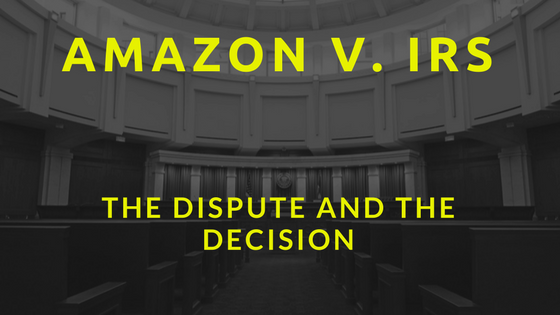On March 23, 2017, The US Tax Court released Judge Albert Lauber’s Opinion in Amazon.Com, Inc. v. Commissioner of Internal Revenue, 148 T.C. No. 8, Docket No. 31197-12 (“the Opinion”). In a landmark decision, the Court sided with Amazon.com Inc.
Data Used in Royalty Rate Calculation
As the provider of the data used to calculate the proper royalty rate for marketing intangibles in the Opinion, our analysts have done a thorough review of the case in order to discern what this means, going forward, for analysts and tax professionals around the globe. Given this decision and the OECD’s work on BEPS, transfer pricing practitioners must be more vigilant than ever when analyzing royalty and licensing data.
The full case can be read at ustaxcourt.gov.
Upcoming “Lessons Learned” Blog Series
Over the next few weeks, we will publish several blogs detailing the lessons to be learned from this case. You can also keep an eye out for our article Amazon and its lessons for transfer pricing professionals in the May edition of International Tax Review.
Amazon series includes:
- Amazon Lesson 1: The CUT Method of Transfer Pricing is Not Dead
- Amazon Lesson 2: Know Your Transfer Pricing Data
- Amazon Lesson 3: Conduct Your Royalty Rate Calculation Wisely
Below is a summary of important facts regarding marketing intangibles in the case.
Marketing Intangibles Case Facts
To set the stage for the valuable lessons TP practitioners can learn from the case, there are a few important facts to consider regarding marketing intangibles:
Cut method transfer pricing
While both sides of the case came to different conclusions for what the proper buy-in payment was, both parties agreed that the CUT method was the best method for determining arm’s length pricing. (1)
Intangible asset valuation dispute
Ultimately, there were five points of disagreement with regards to the intangible asset valuation:
- “(1) the proper royalty rate;
- (2) the useful life of the marketing intangibles;
- (3) the revenue base to which the royalty should be applied;
- (4) the appropriate discount rate; and
- (5) the extent (if any) to which the buy-in payment must be adjusted to reflect the European Subsidiaries’ prior ownership of certain marketing intangibles.” (1)
Royalty rate calculation
The expert for Amazon, Mr. Robert Reilly (Willamette Management), selected a median royalty rate of 0.59% based on a comparable transaction analysis containing a final set of six agreements.
The expert for Commissioner of Internal Revenue, Mr. David Haigh (Brand Finance), chose a rate of 2.0%, the highest rate of his set.
After a review of each analyses, and subsequently choosing their own comparables, the Court agreed with Mr. Haigh regarding choosing the highest rate. However, the Court chose 1.0% as the final rate based on the strength of Amazon’s brand in 2005. (2)
These facts provide the groundwork for the lessons TP professionals should take away from the case. Check back for more posts on the topic, and how ktMINE data can assist TP professionals create more defensible analyses.
(1) Page 127, Amazon.Com, Inc. v. Comm’r, 148 T.C. No. 8, Docket No. 31197-12, (March 23, 2017). Available at https://www.ustaxcourt.gov/UstcInOp/OpinionViewer.aspx?ID=11148 (accessed March 24, 2017). (Hereafter Amazon.com Inc. (2017))
(2) Page 129, Amazon.com Inc. (2017)





